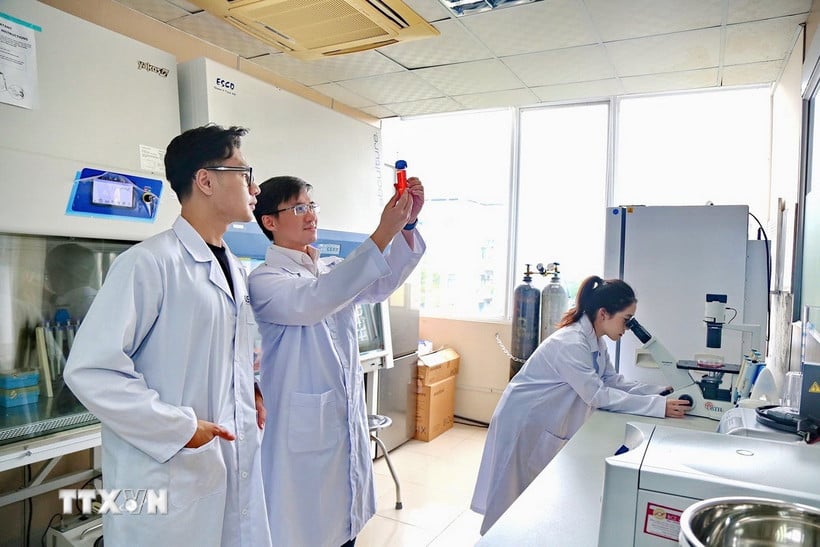 |
| The Vietnam Academy of Science and Technology always focuses on training highly qualified human resources in the field of science and technology. (Photo: Dieu Thuy/VNA) |
From October 1, 2025, two laws will come into effect, including the Law on Science, Technology and Innovation and the Law on Corporate Income Tax.
Shift from using core technology to mastering strategic technology
The Law on Science, Technology and Innovation consists of 7 chapters and 73 articles; creating a legal corridor for science, technology and innovation to contribute to enhancing national competitiveness, contributing to socio -economic development, ensuring national defense and security, improving people's quality of life and human development.
The law has strongly innovated in management thinking, from controlling processes and inputs such as invoices and detailed documents to managing output results and efficiency, accepting risks associated with risk management; at the same time, establishing a clear direction on the transition from a country that mainly uses core technology to mastering strategic technology.
Notably, Clause 1, Article 6 of the Law clearly states the strategic orientation for science, technology and innovation development, including: Science, technology and innovation activities must be linked to socio-economic development goals, promoting economic growth, improving labor productivity, sustainable and inclusive development; prioritizing science and technology solutions that contribute to environmental protection, developing a circular economy, green transformation, and adapting to climate change; ensuring fairness in access to technology.
Linking science, technology and innovation activities with market needs; identifying enterprises as the center of the innovation system; enhancing the capacity to receive, master and commercialize domestic technology; promoting the application of research results, encouraging an increase in the proportion of investment from the private sector, especially from enterprises, for scientific research, technology development and innovation.
The State creates development, builds institutions, promotes investment, develops synchronously and modernizes science, technology and innovation infrastructure; promotes an open, transparent and effective innovation system. Focuses resources on technology fields with potential to create breakthroughs and strategic technologies on the basis of closely following global technology trends, internal capacity and competitive advantages of the country; develops a high-quality team of science, technology and innovation human resources; attracts and makes use of domestic and foreign talents.
Encourage risk-taking activities in scientific research, technology development and innovation through controlled testing mechanisms, risk-sharing policies, venture capital and other specific financial mechanisms. Arouse and connect all resources in society for innovation; ensure that resources are used to maximize creative capacity, value creation ability, internal development and effective coordination; expand international cooperation and proactively participate in the global technology value chain.
According to the Law, May 18 every year is Vietnam Science, Technology and Innovation Day.
Many new points related to taxpayers and taxable income
With 4 chapters and 20 articles, the Law on Corporate Income Tax was promulgated to fully institutionalize the policies and orientations identified in documents and resolutions of the Party and State on reforming the tax policy system in general and corporate income tax policy in particular; review and clearly identify the contents and scope of issues that need to be amended and supplemented to overcome difficulties and problems arising in recent times; ensure consistency and unity between the provisions of the law on corporate income tax and the provisions of relevant laws, especially the laws on investment, enterprises, science and technology, innovation and digital transformation, digital technology , etc.
The Law on Corporate Income Tax applies from the 2025 corporate income tax period. Compared with the current Law on Corporate Income Tax, the Law on Corporate Income Tax 2025 has new points related to taxpayers and taxable income; tax-exempt income; tax period, determination of taxable income and tax calculation method; deductible and non-deductible expenses when determining taxable income; corporate income tax rate; corporate income tax incentives...
Notably, Article 10 of the Law on Corporate Income Tax 2025 stipulates the corporate income tax rate as follows: The corporate income tax rate is 20%, except for the cases specified in Clauses 2, 3 and 4 of this Article and the subjects entitled to tax rate incentives specified in Article 13 of this Law.
The tax rate of 15% applies to enterprises with total annual revenue not exceeding 3 billion VND.
The tax rate of 17% applies to enterprises with total annual revenue from over 3 billion VND to no more than 50 billion VND.
The revenue used as the basis for determining whether an enterprise is eligible for the 17% and 15% tax rates in Clauses 2 and 3 of this Article is the total revenue of the previous corporate income tax period. In the case of a newly established enterprise, the Government shall provide detailed regulations on determining the total revenue used as the basis for application.
Corporate income tax rates for other cases, for oil and gas exploration and exploitation activities: tax rates from 25-50%. Based on the location, exploitation conditions and mine reserves, the Prime Minister decides on specific tax rates appropriate to each oil and gas contract.
For exploration and exploitation of rare resources (including platinum, gold, silver, tin, tungsten, antimony, gemstones, rare earths and other rare resources as prescribed by law): the tax rate is 50%. In case of mines with 70% or more of the assigned area in areas with particularly difficult socio-economic conditions: the tax rate is 40%.
Maintain security and safety of credit institutions system
In October 2025, the Law amending and supplementing a number of articles of the Law on Credit Institutions, consisting of 3 articles, will take effect from October 15, 2025.
The Law is built and promulgated in the spirit of closely following the viewpoints, policies and guidelines of the Party and the laws of the State; ensuring constitutionality, legality and consistency with relevant legal documents; in accordance with international treaties to which Vietnam is a member as well as international practices, ensuring the goal of international integration, and in line with development trends.
The amendment of the authority to decide on special loans ensures timely, strict, effective and feasible implementation, contributing to maintaining the security and safety of the credit institution system, preventing negativity, loss, waste and violations of the law.
Notably, the Law stipulates the adjustment of the State Bank's authority to decide on special loans with an interest rate of 0%/year, without collateral, to ensure complete decentralization and delegation of authority to the State Bank, and timely liquidity support for credit institutions through special loans; regulations on the right to seize collateral; regulations on the seizure of collateral; and return of collateral as evidence of criminal cases./.
Source: https://huengaynay.vn/kinh-te/hai-luat-se-co-hieu-luc-thi-hanh-tu-ngay-1-10-158322.html




![[Photo] Hanoi morning of October 1: Prolonged flooding, people wade to work](https://vphoto.vietnam.vn/thumb/1200x675/vietnam/resource/IMAGE/2025/10/1/189be28938e3493fa26b2938efa2059e)



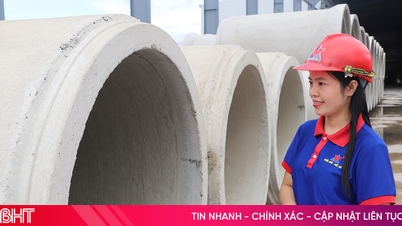





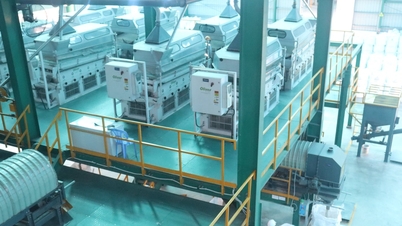

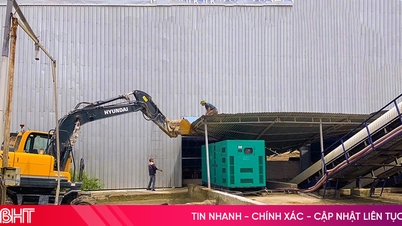


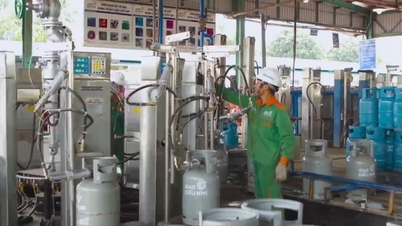

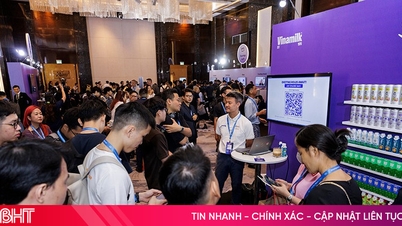

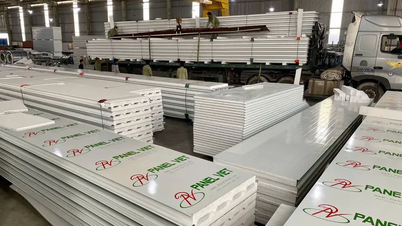

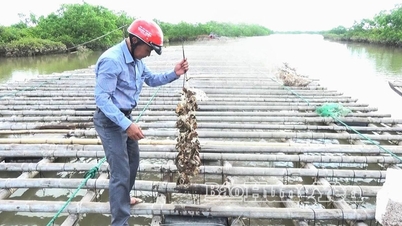













![[Photo] Panorama of the cable-stayed bridge, the final bottleneck of the Ben Luc-Long Thanh expressway](https://vphoto.vietnam.vn/thumb/1200x675/vietnam/resource/IMAGE/2025/9/30/391fdf21025541d6b2f092e49a17243f)




































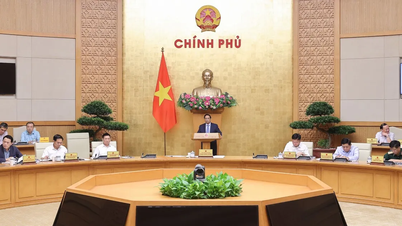





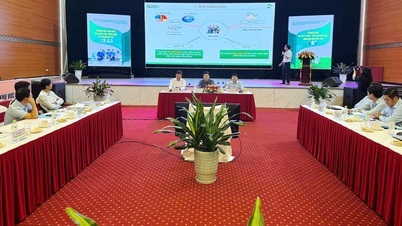
















Comment (0)